When we are comparing aquaponics vs hydroponics we can see several differences. These include:
| Aquaponics | Hydroponics | |
| Nutrients | Fish | Fertilizer |
| Setup costs | High | Low |
| Knowhow | High | Low |
| Maintenance | High | Low |
| Output | Fish + crops | Only crops |
| Pesticides | Not possible | Possible |
For a more detailed overview, go ahead and read about aquaponics vs hydroponics below.
Understanding Aquaponics
Food production has taken new and advanced scientific turns since the last few decades. One such technique which is a combination of aquaculture and pisciculture is popularly known as aquaponics.
This is a sustainable process which is helpful in crop production, fish rearing and also in the conservation of water. One can grow many types of fish using an aquaponic system like barramundi and tilapia.
The type of fish in an aquaponic environment depends both on temperature and pH. Even in some of the systems koi, shrimp, and trout are grown. These fish grow on food given to them (preferably a sustainable source) so that their waste and its nutritional contents can be controlled.
What can be grown in Aquaponics?
In an aquaponic system, one can grow several types of vegetables depending on the types of fish used, the pH of the water, temperature, and size of the aquaponic system. Some of the very common plants are:
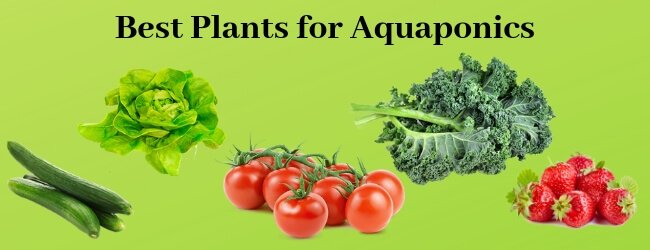
- Herbs
- Spring onions
- Spinach
- Radishes
- Lettuce
- Okras
- Cucumbers
- Cabbage
- Broccoli
- Tomatoes
- For a complete list, check my article on the best plants for aquaponics.
There are different types of systems of aquaponics which are used both as household DIY gardens and for commercial purposes like water tanks, flood, and drain, water submerged deep culture techniques.
In the aquaponic system, whether small or large, one thing plays a major role for both fish and the crops, and that is the ammonia value of the water. The fish create waste from the food they eat and it turns to ammonia.
Bacteria will convert that ammonia to nitrates in a growbed or biofilter. If there are little or no bacteria in the system, the ammonia will not be converted to nitrates. Because ammonia is toxic to the fish, the fish will eventually die.
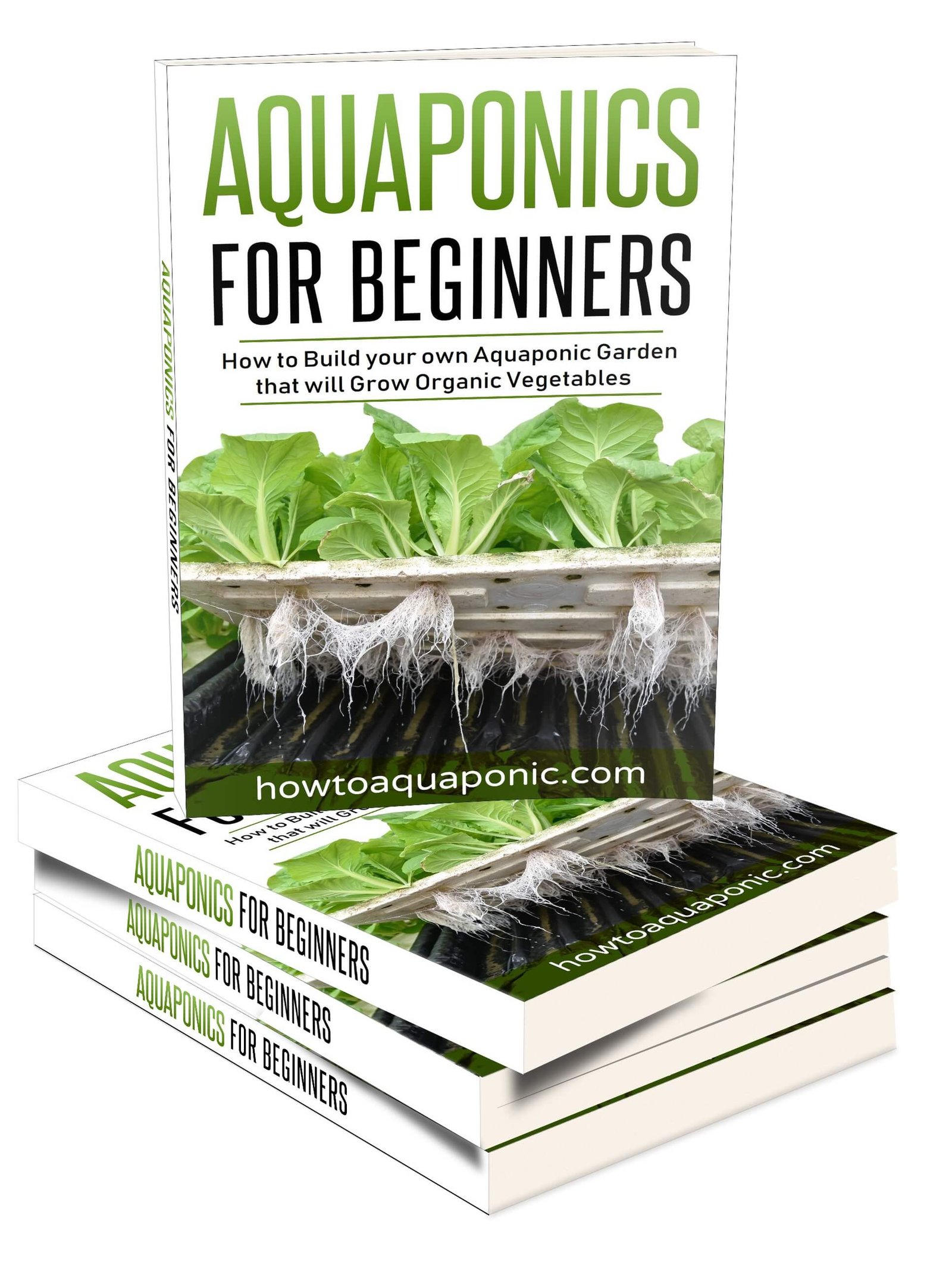 I have written a book that contains all the information you need to get started with aquaponics.
I have written a book that contains all the information you need to get started with aquaponics.
Don’t be the person that makes painful mistakes during your first aquaponics build!
It has 265 pages filled with information about aquaponics. It’s available in paperback or eBook format.
You can buy it here on Amazon.com
How does an aquaponic system work?
Building an aquaponic system is not difficult, but the main challenge is to maintain it, after all, there are three types of living organisms in the water namely fish, plants and bacteria.
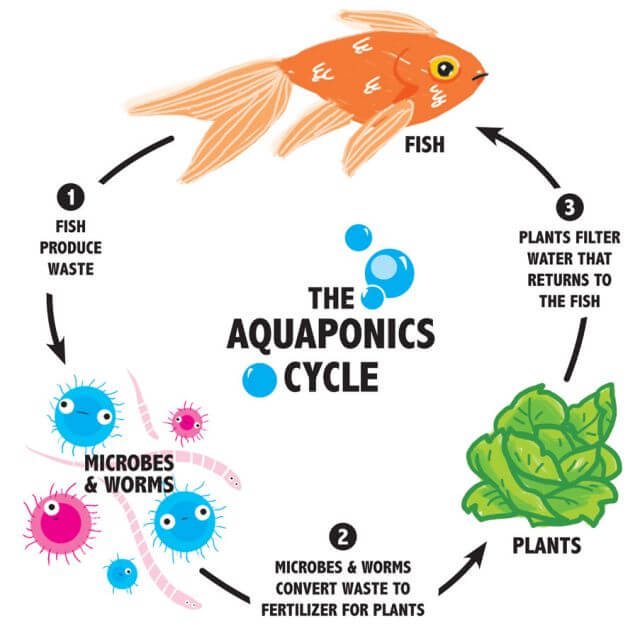
There are several types of components which are required to keep the system in order. They are:
- Rearing tank: this tank is used for rearing the fish. It can be any type of container where the fish can live.
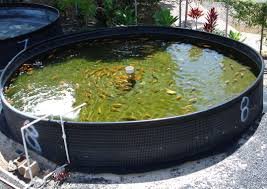
- Biofilter: this is needed for bacterial growth so that they can convert ammonia to nitrate, which is an essential element for the growth of the plants.
- Grow bed: this is the place where plants are grown and they absorb all the nutrients from the water.
- Solid remover: this is important to remove particle matter from the water.
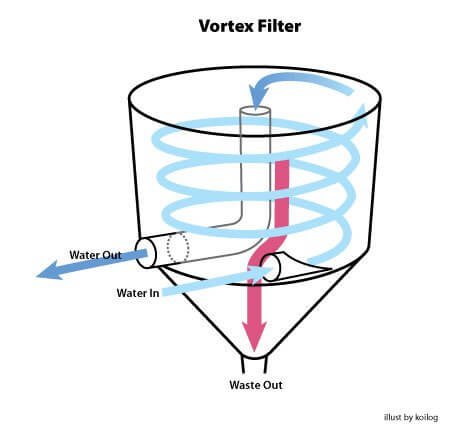
- Water pump: the pump helps in circulating the water to and from the rearing tank.
- Fish feed: depending on the type of fish that are grown in the rearing tank, one needs to find a suitable fish feed to feed them so that their wastes are more nutritional. Some of the famous fish feeds are worms, larvae, duckweed, and many other organic feeds.
Using all these components, an aquaponic system is created. In general, an aquaponic system is a recirculation system where fish grow in fresh water and feed on organic food that they need on a daily basis. Like any other animal fish too, give away fecal waste which accumulates in the water.
Now, this water becomes toxic which can be dangerous for the fish, so to negate this disadvantage, the water is then transferred into a growbed where microbial actions take place which converts the ammonia into nitrate which is a plant nutrient. Therefore, this water is now a great source of nutrition for different types of plants.
After some time, as the plants use up all the nitrates from the water, it becomes depleted. Therefore, the water is transferred back to the rearing tank where fish get fed and create ammonia and the growbed or biofilter converts the ammonia to nitrates. From the above explanation, it is clear that an aquaponic system is highly sustainable in nature because it minimizes the use of fertilizer and water.
Types of Aquaponics systems
There are three most common types of aquaponics system which can be installed for domestic as well as commercial purposes. These systems are:
- Nutrient film technique (NFT) – this technique is used both in hydroponics and aquaponics. In this system, water is enriched in nutrients and flows through small gutters as a very thin film. On top of these gutters, plants sit in small cups in such a way that their roots can touch the film and access the nutrients. This technique is mostly used for small vegetables, especially leafy ones (lettuce and strawberries) that have small roots.
- Media filled grow beds – this aquaponic system is the simplest of all and is also suitable to grow vegetables with a bigger root. In this system, the grow bed is filled with expanded clay or river rock medium through which the fish water is pumped either in a continuous flow or in a flood and drain cycle.
- Deepwater culture (DWC or floating rafts) – this technique is a commercial process where the plants are kept floating on the top of the water so that their roots can touch the water and absorb the nutrients from it. The most common type of deep water culture setup is when the fish are reared in a tank and the water is pumped out into the water channels on which floating rafts are set up with plants growing through them.
Advantages and Disadvantages of Aquaponics
- You can harvest both fish and crops
- No need for fertilizer, the system provides it’s own
- No pesticides and chemicals are used because it will kill the fish
- Saves water compared to soil growing
- Fully organic
- No soil born diseases
- Highly efficient for its surface area
- A lot of know-how is required
- More complex than hydroponics
- More space is required
- You need to feed the fish
Understanding Hydroponics
Hydroponics, as the name suggests, is based in water. In this technique, plants are also grown using water as their nutrient medium instead of soil.
The system does not rely on soil, instead, it uses different media that are inert in nature like peat moss, perlite, clay pellets, vermiculites, etc. The main objective of using this inert medium is to allow the roots to absorb nutrients from the water and also have proper access to oxygen to help them in their growth.
It’s the same as aquaponics but without fish and microbes, so it’s less complex. In order for the plants to get the nutrients, people need to add a nutrient solution.
Like it is mentioned in science, a plant needs carbon dioxide and water in the presence of sunlight and chlorophyll to produce their food, also known as glucose.
Nowhere is it mentioned that they need soil to grow. Therefore, using this theory itself, the hydroponic system was created, that is the plants grow using oxygen and nutrition by standing in a nutritious solution.
What can be grown in hydroponics?
One can tweak the nutrient concentration of the growing medium in order to make it suitable for growing a particular group of plants. One can grow many things using hydroponics like herbs, vegetables, and flowers.
With herbs, one can grow thyme, mint, parsley, oregano, fennel, cilantro, basil, and many more. For vegetables, one can grow beans, cabbage, broccoli, beets, lettuce, etc.
One can also grow vegetables like carrots, potatoes, onions, etc., but they will require more care as compared to others because they grow below the soil in the natural environment.
For a hydroponic garden, the most important thing that should be kept in mind is the nutrient solution because, without the perfect balance of nutrients, plants will not get their nutritional requirements fulfilled.
Some of the very important elements of a nutrient mix are nitrogen, magnesium, potassium, sulfur, calcium, iron, zinc, boron, copper, etc.
How does a hydroponic system work?
Whether to set a hydroponic system in one’s domestic garden or in an industrial set up, there are some conditions which are of great importance.
- pH: it controls the acidity and alkalinity of the nutrient mix to keep it optimum for plant growth. The basic pH level should be from 5 to 7.
- Light: proper light is a necessity for the growth of the plants. One should make sure to let the plants get some sunlight during the daytime and replace it with a full spectrum light from fluorescent lights which can supplement the natural source of light. One can also use halide and sodium lights depending on the plants’ requirements.
- Growing medium: like it was mentioned above, in hydroponics, plants don’t require soil, but they do require certain growing mediums which will help in supplying the nutrient mix to the plants. The most common medium used is rock wool which is loose sheets of melted rock which are spun into threads.
All these components together help in creating a hydroponic system in such a way that plants grow in the growth medium while the nutrient medium consisting of different nutritional elements pass through it.
Types of hydroponic system
Some of the very common types of hydroponics are:
- Deepwater culture– in this technique, the roots are kept suspended in the nutrient mix while an air pump oxygenates the nutrition solution. In this system, there should be no light penetrating the root and medium space to avoid algal growth.
- Nutrient film technique– this system is based on film technique in which the nutrient solution flows continuously through the plant roots using the force of gravity. As the solution touches the root tips, there will be enough oxygenation of the roots too.
- Wicking– this is one of the simplest methods which uses a wick made of cotton whose one end is dipped into the nutrient solution and the other end is placed in the growing medium. In this way, the nutrient mix enters the growth medium and reaches the roots of the plant.
- Drip system– in this rather simple technique, the nutrient medium is slowly fed into the growing medium using a drip system. In this system, it is recommended to use the slow draining growing medium.
- Aeroponics– in this technique, the nutrient solution is sprayed onto the roots either by using a spray nozzle or a pond fogger.
Advantages and Disadvantages of Hydroponics
- You don’t need soil
- Only a small space is required
- You can control the nutrients for each plant
- No soil-borne diseases.
- Fertilizer is expensive
- You only get vegetables, not the fish
Difference Between Hydroponics and Aquaponics
Both of these methods are used as agricultural techniques for growing crops without soil. If seen broadly, aquaponics is a branch of hydroponics because in aquaponics, fish, and microorganisms are used in a combination with hydroponics.
- In hydroponics, plants are cultivated using a nutrient mix made by humans, whereas in aquaponics, plants, and fish both are cultivated in a symbiotic nutrient system.
- In hydroponics, the nutrient is manmade, and in aquaponics, the fish waste is used as the nutrient source.
- In hydroponics, bacterial growth is inhibited at any cost by keeping the temperature low, but in aquaponics, the temperature is maintained in such a way that there is an induced bacterial growth for nutrient production from the fish waste.
- Hydroponic systems are difficult to maintain as they have to be cleaned and reloaded again and again to avoid toxic build-up, but in aquaponics, the maintenance is easy as the water gets re-circulated again and again.
- A hydroponic system is faster to set up as compared to the aquaponic systems.
- Hydroponic systems are costlier and also have low productivity as compared to aquaponic systems which are effective and cheap.
Conclusion
Whether one wants to choose hydroponics or aquaponics, it entirely depends on the available resources and your desire to learn about both methods. Aquaponics can have a steep learning curve while there is less know-how needed for hydroponics. If you want a challenge and like growing fish, I highly recommend exploring aquaponics
 I have written a book that contains all the information you need to get started with aquaponics.
I have written a book that contains all the information you need to get started with aquaponics.
Don’t be the person that makes painful mistakes during your first aquaponics build!
It has 265 pages filled with information about aquaponics. It’s available in paperback or eBook format.
You can buy it here on Amazon.com

Nick loves building, managing and giving others advice on aquaponics. He created this website to do just that. He is the author of Aquaponics for beginners. If you got a question contact him here or read more on the about page here.
